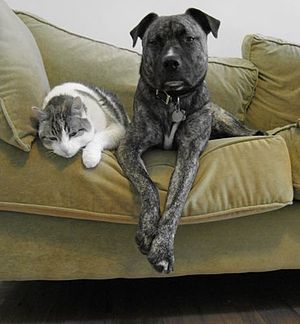On average, it takes approximately eight hours for food to pass through a dog’s small intestines. During this time, most of the food and 80 percent of the liquid in the stool is absorbed. The colon then concentrates what is left to form a typical stool. When your dog is sick, the normal process does not occur and his stool moves through his bowel quickly. This makes it arrive at his rectum in a liquid state, which is referred to as diarrhea.
One of the most common causes of diarrhea is a dog’s diet. Dogs are scavengers and eat numerous substances that are unable to be digested. These substances can include grass, plants, decaying food, wood, plastic and paper. Many of these substances irritate the stomach and bowel.
There may be some foods that your dog cannot tolerate. Some dogs are unable to eat certain table foods or specific commercial dog foods. Food allergies and food intolerances are not the same thing. A food allergy generally causes vomiting and/or dermatitis, as opposed to diarrhea. Other causes of dog diarrhea include parasites and bacterial infections.
Your dog’s diarrhea may take various forms. Stool can range from extremely soft to watery. Other signs may be present including gas, difficulty defecating, as well as blood and/or mucus in his stool. You may also notice that his stool has an abnormal odor. Most cases of diarrhea can be treated at home with a natural remedy; however, there are some cases that will require medical attention. If your dog has bloody diarrhea combined with severe straining you should seek him medical attention immediately. Another time you should seek medical assistance is if your dog has diarrhea and is vomiting.
Treating Your Dog’s Diarrhea
If you want to improve your dog’s digestion and eliminate chronic diarrhea naturally, consider treating him with Allergic Pet’s veterinarian formulated all-natural diarrhea treatment. This treatment is so gentle that he can take it every day. One of the best things about Allergic Pet’s diarrhea treatment is that, unlike many of the conventional drug therapies, it has no harmful side effects. You can feel safe and secure with Allergic Pet’s diarrhea treatment because this product has been used in clinical practices for more than 20 years.






